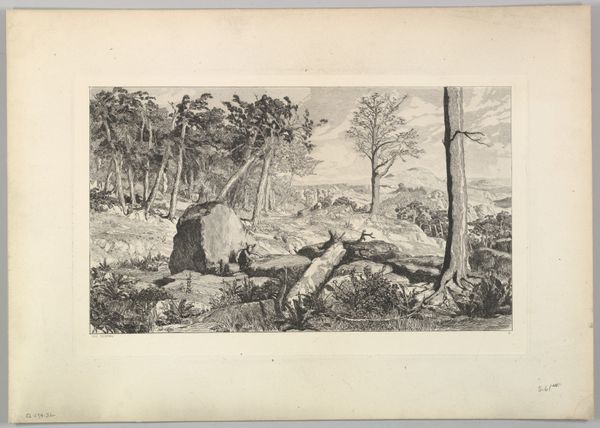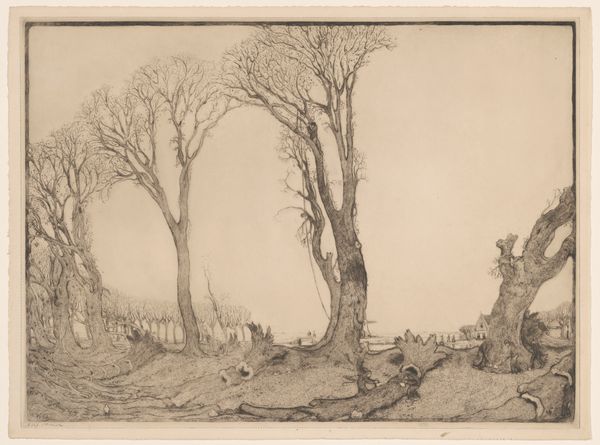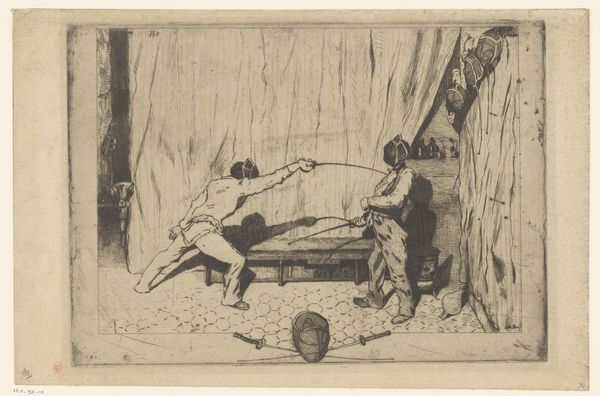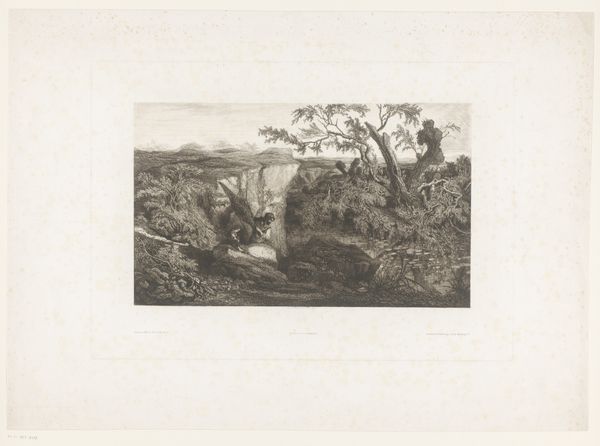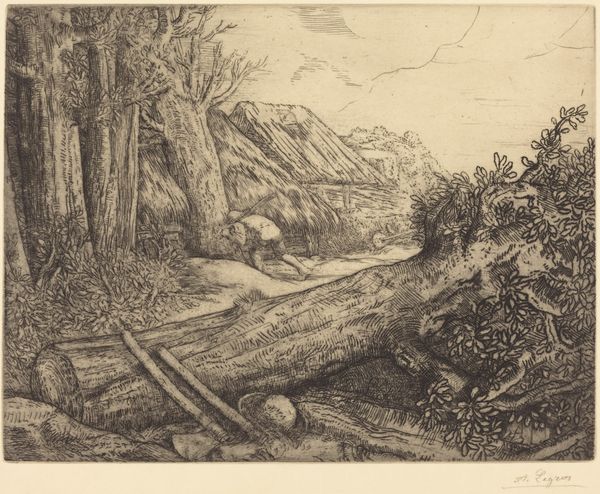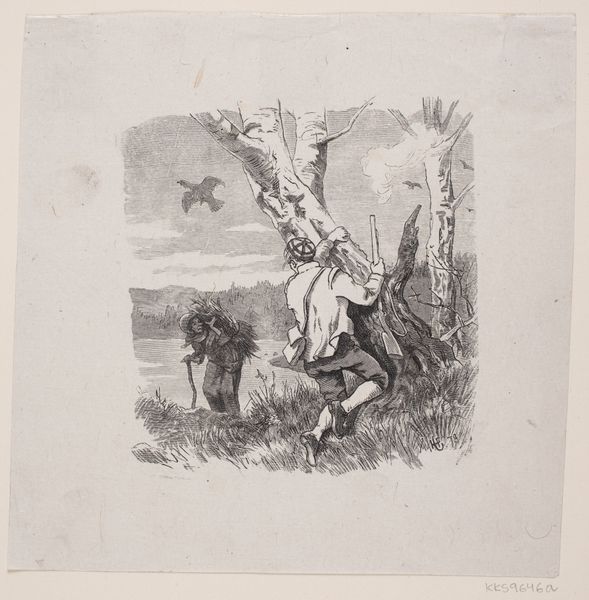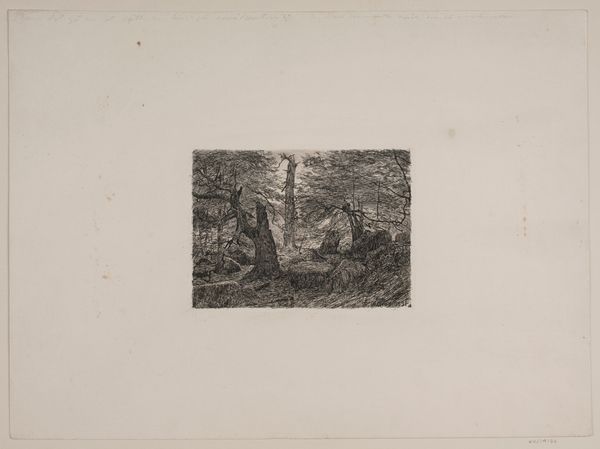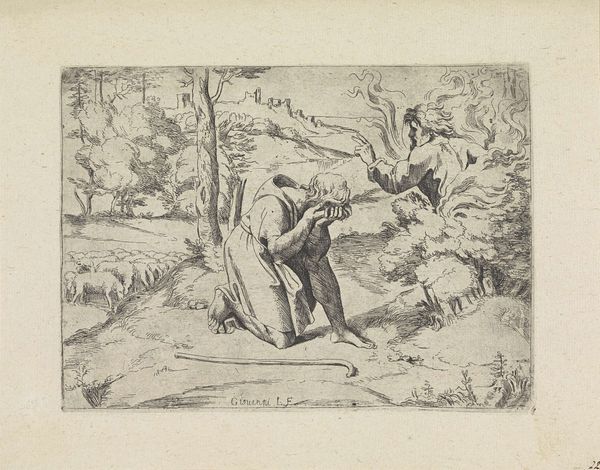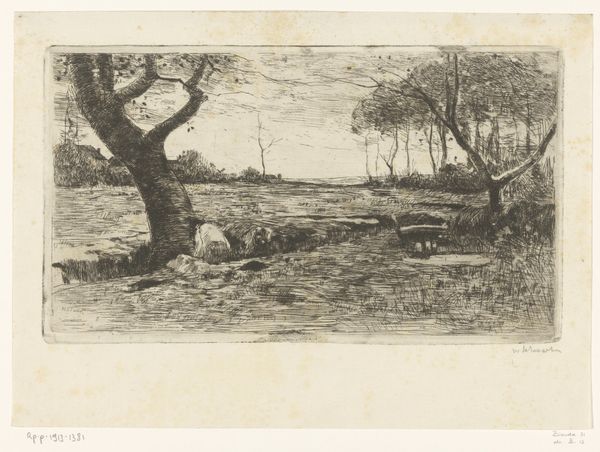
drawing, print, etching, paper
#
drawing
# print
#
etching
#
landscape
#
figuration
#
paper
#
genre-painting
Dimensions: 407 × 658 mm (image); 418 × 670 mm (plate); 484 × 712 mm (sheet)
Copyright: Public Domain
Alphonse Legros made this etching called 'The Lumberjacks, second plate’ sometime in the late 19th century. It depicts a group of men hard at work in a forest. Legros was a French-born artist who later taught at the Slade School of Fine Art in London. He spent much of his career moving between France and England, between the academic art world and the rising fashion for ‘art for art’s sake.’ The image is a study in labor, showing the physical strain of the lumberjacks. This was a period of increasing industrialization, and artists were beginning to explore the lives of working-class people. In France, the Barbizon School was painting rural landscapes and peasants. In England, there was a growing interest in social realism. Legros’s print participates in that cultural moment, depicting a scene of manual labor. To understand the image more deeply, we might look into the history of forestry and labor practices in both France and England during the late 19th century. What does the image tell us about changing attitudes toward the working class?
Comments
No comments
Be the first to comment and join the conversation on the ultimate creative platform.
